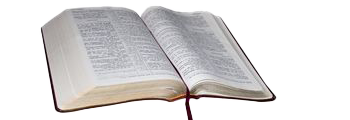
CHURCH OF THE BRETHREN NETWORK
Continuing the work of Jesus : Peacefully ~ Simply ~ Together
UNOFFICIAL WEBSITE OF THE CHURCH OF THE BRETHREN

 |
CHURCH OF THE BRETHREN NETWORK Continuing the work of Jesus : Peacefully ~ Simply ~ Together UNOFFICIAL WEBSITE OF THE CHURCH OF THE BRETHREN |
 |
Brethren Life
Have you ever wished that you could go back in time and experience life in a typical Brethren farming community? When life was at a much slower pace, without the vibration of noisy over crowded highways, and the word filth referred to something in a barnyard. Here is at least one opportunity to discover what simple family life was like during the 1840-1850's, in and around the small farming community of Boston, Indiana. For some this will be a chance to discover former ways of more simple living and for others it will be a refreshing trip down memory lane, because of stories that grandparents used to tell. Brethren church historian Merle C. Rummel has graciously permitted several chapters of his book, "Four Mile Community" to be place online, so that people in the modern world may discover what life was like in a more simple time, when people knew almost everyone in town. It was truly a time of sheltered existence for many, a time for cultivating a rich heritage of family experiences when the outside world - was still the outside world.
Four Mile Church: BRETHREN COMMUNITY
Written by Merle C. Rummel ~ Published April, 1998 ~ Last Updated, November, 2009 ©
This document may be reproduced, only if remaining intact, with full acknowledgement to the author.
 rom the late 1820's to 1860, the Four Mile community was a stable farm community. There was a slow improvement in farming equipment and practices. Home-making practices similarly changed only slightly with some improvements becoming available. There was no sudden explosion of new ideas, people still worked in the same old way. The typical house was still a log building, but it often was two stories tall, with an enclosed lean-to or even the old cabin on the rear. It was a house, no longer a cabin. It would have three to five rooms downstairs and two rooms upstairs. The bigger house would have a main stair case up from the center front door. There would be downstairs and upstairs fireplaces on each end of the front portion of the house. The fireplaces and chimney were laid with stone or fired brick. Specific measurement ratios for the fireplaces made for better heat and cooking. The basic "T" or "L" shape architecture was common, the room back of the main front section would be the kitchen, with a large fireplace in back for cooking. There might be a wash room, summer kitchen, behind it, with its own fireplace. The center of the house life was in the kitchen, from the first activities in the morning, the meals, to the closing of the day. The upstairs rooms were bedrooms: one for the boys, the other for the girls, one of the downstairs rooms would be a bedroom for the parents, the other would be a parlor, or sitting room. It would be the large room that would be used when church services came there. The windows were double sashed, glass. There were shutters to protect the glass from storms. There would be no front porch, although the rear cabin room might have its roof extended as a side porch. Some of these houses were of brick. Potter John's was only the first (of stone). Tobias Miller and Col John Miller had theirs. Jacob Lybrook had built a smaller brick cabin, before his son-in-law, John Hart, built the big brick house.
rom the late 1820's to 1860, the Four Mile community was a stable farm community. There was a slow improvement in farming equipment and practices. Home-making practices similarly changed only slightly with some improvements becoming available. There was no sudden explosion of new ideas, people still worked in the same old way. The typical house was still a log building, but it often was two stories tall, with an enclosed lean-to or even the old cabin on the rear. It was a house, no longer a cabin. It would have three to five rooms downstairs and two rooms upstairs. The bigger house would have a main stair case up from the center front door. There would be downstairs and upstairs fireplaces on each end of the front portion of the house. The fireplaces and chimney were laid with stone or fired brick. Specific measurement ratios for the fireplaces made for better heat and cooking. The basic "T" or "L" shape architecture was common, the room back of the main front section would be the kitchen, with a large fireplace in back for cooking. There might be a wash room, summer kitchen, behind it, with its own fireplace. The center of the house life was in the kitchen, from the first activities in the morning, the meals, to the closing of the day. The upstairs rooms were bedrooms: one for the boys, the other for the girls, one of the downstairs rooms would be a bedroom for the parents, the other would be a parlor, or sitting room. It would be the large room that would be used when church services came there. The windows were double sashed, glass. There were shutters to protect the glass from storms. There would be no front porch, although the rear cabin room might have its roof extended as a side porch. Some of these houses were of brick. Potter John's was only the first (of stone). Tobias Miller and Col John Miller had theirs. Jacob Lybrook had built a smaller brick cabin, before his son-in-law, John Hart, built the big brick house.
Out the back door was the spring house, where a cool flow of water was guided down troughs in either side, usually deep enough to set a pail of milk and crock of meat, to keep it from spoiling so fast. A flat rock made a shallow place where a dish of butter could rest, and other foods for the kitchen table. The spring-house was the storage for the kitchen, and the cool water was used, since ice was available normally only in the winter. (The old log cabin at Harmon Toney's was insulated with sawdust and made into ice storage for summer use.) Close by was the wood house, where they kept logs and split wood cut for the fireplaces, to keep them dry. (There was no sense in trying to burn wet wood, most of the heat of the fire would be used to driving the moisture out of the wood so it would burn.) Also out back was the necessary. There were chamber pots in each bedroom, but out back was where a person went. It was a long walk at night for a little child, and there were livid visions of all the horror stories that were told: of black widow spiders down in those dark holes, of each creak and crack of noise in the dark outdoors clothed in wild monster skins, of bats that drank blood. Somewhere close by was a buried room, called a fruit cellar or storm cellar. This was covered over with dirt for at least 4 feet, to get it below the ground freezing level. It faced east, with a solid slanting door and steps, the back protected against winter winds. It was dirt floored and stone or log walled with heavy timbers for the ceiling to hold the dirt overhead. A tile lined hole from above allowed fresh air into the room and aided the respiration of the potato spuds in flat bins along one or both walls.